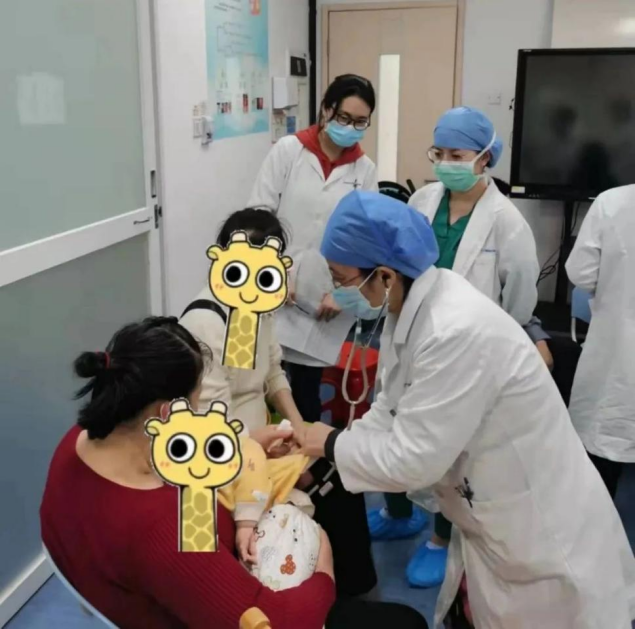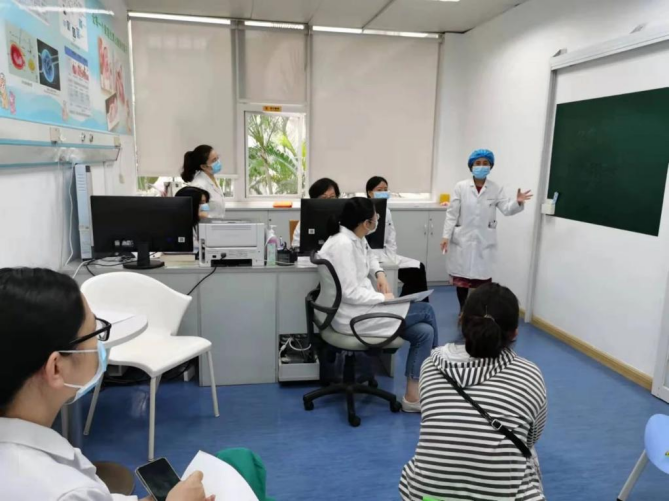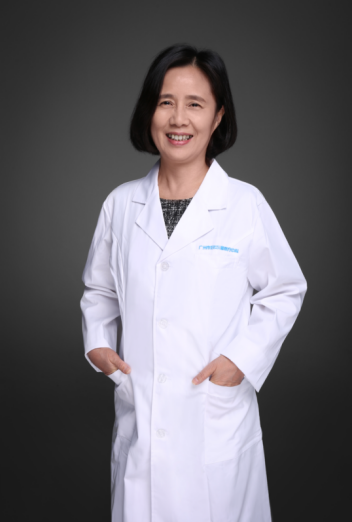Professor Liu Li: The diagnosis and treatment of rare diseases require joint efforts from multiple parties to eliminate barriers
"When we were kids reading 'The Little Match Girl', how we wished that someone could help her and let her have some food and warmth on Christmas Eve. Rare disease patients are just like the little match girl. Now that we have grown up and have the ability, we should help them and bring them warmth," Professor Liu said emotionally.
Rare diseases have always been a major challenge in the medical field. Due to their rarity and diverse types, complex clinical phenotypes, insufficient understanding by medical staff, rare disease diagnosis and treatment are difficult. The planning and guarantee for rare diseases in the domestic medical system are low, and research into rare diseases started late. Clinical experts are scarce, and many times patients have difficulty seeking medical treatment.
The development of the economy has awakened awareness of disease prevention and control, and various parties are taking action together.
As an expert in rare disease diagnosis and treatment, Professor Liu Li has been committed to promoting the development of rare disease diagnosis and treatment for many years. Regarding the progress of rare disease diagnosis and treatment in China, she said, "From nothing to something, I think the country has made great progress, but there are still many difficulties to overcome in the future." From Professor Liu's introduction, we learned that the World Health Organization defines rare diseases as diseases with a prevalence rate of 0.6 ‰ to 1‰, but each country has its own definition of rare diseases. Countries with better economic conditions have slightly broader definitions and more support. In 2018, China announced that 121 diseases are defined as rare diseases. Although there are more than 7,000 rare diseases internationally, those 121 diseases are just the tip of the iceberg, but they are also a milestone in the rare disease diagnosis and treatment work in our country.
"The concept of rare diseases arose with the development of the economy. When the economy develops to a certain degree, the health rights of every citizen should be paid attention to and protected," Professor Liu said. In addition to the increasing attention of society to rare diseases, the awareness of prevention and control of rare diseases among patients is also awakening. In the past, if a patient had a disease that could not be diagnosed or treated by a doctor, many people had to accept their fate and choose to give up treatment. But now they are beginning to consciously self-rescue: establishing disease alliances, forming patient groups, raising funds to develop drugs, increasing publicity to obtain more social attention, and actively seeking doctors to research their diseases... Seeing these changes, Professor Liu felt pleased, "This is a demonstration of our improved level of civilization."
Medical workers have begun to pay attention to rare diseases, setting up various societies, analyzing the causes of diseases, seeking treatment methods, sharing research progress, standardizing diagnosis and treatment, and educating the public. They are calling on the National People's Congress and the National Committee of the Chinese People's Political Consultative Conference to pay attention to this special group and to ensure that rare diseases are "rare but not alone". Representatives of the National People's Congress began calling for the government to formulate relevant policies. In 2016, an expert group was established by the National Health Commission to study rare diseases and define rare diseases in China. After two years of intense discussions and debates, the first batch of rare diseases catalog was issued on May 23, 2018. The drug regulatory authority listed treatment drugs related to rare diseases based on this catalog and established a green channel for these drugs, enabling rapid entry of these drugs into the Chinese market. Currently, more than 60 rare disease drugs have been approved for marketing in China, and more than 40 rare disease drugs have been included in the national medical insurance drug list, involving 25 diseases. Rare disease drugs have the shortest evaluation and approval time limit among all drugs applying for marketing approval. The Ministry of Science and Technology has established special funds to support rare disease research.
In 2019, the National Health Commission established the rare disease diagnosis and treatment collaboration network, and established a two-way referral and remote consultation system within the collaboration network to support rare disease diagnosis and treatment work. Currently, the collaboration network covers 324 hospitals. The Guangzhou Women and Children's Medical Center where Professor Liu works is the leading hospital of the collaboration network in Guangdong Province. Confirmed rare disease patients can register in the collaboration network to obtain better medical resources, and achieve individualized long-term management and prevention. It is reported that there are now more than 500,000 registered cases in the country.
"Although the start was late and the process was difficult, everyone has been working hard and making progress in every aspect, which is the gospel for rare disease patients."
There are many obstacles to the promotion of diagnosis and treatment, and institutional guarantees can seek more welfare for patients.
"Rare diseases have two characteristics: there are few researchers and less investment in various aspects, and rare disease patients are not easy to survive and receive less attention." The current situation often makes people feel helpless. Professor Liu believes that to rescue patients from their plight, it is essential to establish more institutional guarantees. "Many doctors and researchers are working hard based on their passion, but passion can only initiate, not sustain. Only legislation can bring sustained guarantees to patients."
Last year, the "sky-high priced drug" Nusinursen sodium injection, used to treat spinal muscular atrophy (SMA), was included in medical insurance and the price dropped from the original 700,000 yuan to over 30,000 yuan per shot. Although this is uplifting, the cost of about 30,000 yuan per shot (the family of the patient needs to bear 16,000 yuan per shot after medical insurance reimbursement) is still difficult for some families to afford. In addition to the cost of the drug, patients also need to bear the cost of rehabilitation, respiratory management, and feeding management, all of which cannot be ignored.
Figure 1. Professor Liu Li diagnosing patients
In addition to the families of patients, medical institutions are also facing many challenges. There are few doctors in the field of rare diseases, limited treatment drugs, and hospitals also face the pressure of assessment. Receiving rare disease patients will undoubtedly bring a significant increase in medical insurance costs, but it cannot bring benefits to hospitals. Assessment indicators such as average cost per visit and average cost per visit growth will result in hospitals losing points in assessments, which limits the willingness of some hospitals to receive rare disease patients. "Everyone is working hard to break down barriers, but I believe that the most fundamental thing is legislation. Only by establishing necessary systems to ensure sustainable development can we truly help them," Professor Liu said frankly.
Relevant departments of the state also attach great importance and constantly try to break through various "bottlenecks". Policies for promoting the development of rare disease diagnosis and treatment work are intensively introduced. In May of this year, the National Medical Products Administration openly solicited opinions on the "Draft Regulations on the Implementation of the Drug Administration Law of the People's Republic of China (Revision Draft)" and proposed to encourage the development and innovation of rare disease drugs, support drug marketing authorization holders to carry out the development of rare disease drugs, encourage the development of new indications for rare diseases for drugs already on the market, and give priority to the clinical urgent need of rare disease drugs in evaluation and approval. Marketing authorization holders are allowed to enjoy a 7-year market exclusivity period. In June, the National Medical Products Administration issued the "Adjustment Work Plan of the National Basic Medical Insurance, Work-Related Injury Insurance and Maternity Insurance Drug Catalogue in 2022 (Solicitation Draft)" and related documents. The plan proposed to encourage rare disease drugs to be included in the medical insurance catalogue, opened a green channel for rare disease drugs to enter medical insurance, and pharmaceutical companies' research and development enthusiasm has reached an unprecedented high. On June 29th, the National Medical Products Administration and the National Health Commission issued the "Temporary Import Work Plan for Clinical Urgently Needed Drugs", clearly listing rare disease drugs as small quantities of clinical urgently needed drugs, releasing a major policy benefit signal.
Adhering to the principle of prevention as the primary strategy, early screening, early diagnosis, and early treatment are the best ways to prevent and treat rare diseases.
Around 80% of rare diseases are caused by problems with genetic material, which may be inherited from the previous generation or may occur spontaneously. It is difficult to evaluate and screen spontaneously occurring mutations, but some of the genetically inherited diseases can be detected through prenatal diagnosis. Prenatal diagnosis has two methods: one is to collect chorionic villus at 10-14 weeks of pregnancy, and the other is to collect amniotic fluid at 15-17 weeks of pregnancy and do corresponding genetic material tests. Patients with a clear family history can also undergo preimplantation diagnosis. That is to say, the sperm and egg are taken out to form embryos and are tested for the same disease as the affected family member about 5 days later. If it is found that the disease is not present in the embryos, they are implanted into the mother's womb.
"Some infertile patients need to be vigilant as infertility may not only be caused by blocked fallopian tubes or weak sperm, but also by potential genetic diseases, which, according to the laws of nature, are meant to be eliminated," Professor Liu said. Due to the advanced technology of reproductive medicine, some fetuses that would have been naturally eliminated are now born through various means of protection, but patients who have not undergone prenatal diagnosis have children with defects, which can bring a heavy blow to a family. "If the proband is very clear and the genotype is very clear, at least 90% can be screened out through prenatal diagnosis," he said. From the perspective of health economics, prenatal screening and eugenics can help rare disease patients get effective treatment early, avoid the medical costs caused by disability, and save social costs, which is a rewarding health investment and a low-cost and high-benefit health strategy.
Remain true to the original aspiration, and bring warmth to patients with the compassion of a healer.
"For more than a decade, Professor Liu has been deeply committed to the field of rare diseases, bringing warmth to rare disease patients when she sees children looking at her with hopeful and desperate eyes, she feels sad and tries her best to help them." She believes that a doctor's duty is to cure diseases and save lives, and her compassionate heart and kind nature as a human being make it impossible for her to stand by and do nothing. This has been her motivation to persist for so many years.
Over the years, Professor Liu has led her team to spare no effort in conducting research and promoting diagnosis and treatment of rare diseases, helping medical workers increase their awareness of rare diseases. Their research achievement "Research and Promotion of Prevention, Diagnosis, Treatment, and Management Strategies of Rare Diseases in Children" won the second prize in Guangdong Science and Technology Progress Awards in April 2021. Professor Liu is grateful for the recognition from the expert group: "This is recognition of our team's work over the years. We will continue to work hard in the future."
Figure 2. Professor Liu Li is discussing a medical case.
Although there are various challenges in the diagnosis and treatment of rare diseases, the path ahead is bright. With the development of biotechnology, emerging therapies such as cell therapy, gene therapy, enzyme replacement therapy, and molecular companion therapy have emerged, and the application of artificial intelligence has also continuously helped the diagnosis and treatment of rare diseases. With the support of various social forces, the situation of rare disease diagnosis and treatment is gradually improving. We look forward to the day when our country can truly achieve "appropriate treatment for every patient" and "appropriate insurance for every medication."
"I myself specialize in clinical genetics, and I often think that society has a responsibility to help these vulnerable groups. Humanity should care for and cherish each other, so that we can continue to thrive and live on."
Expert biography
Figure 3. Professor Liu Li
Professor Liu Li is the Director of the Department of Genetics and Endocrinology at Guangzhou Women and Children's Medical Center, a member of the National Health Commission Rare Disease Diagnosis and Treatment and Security Expert Group, the Chairman of the Rare Disease Branch of Guangdong Medical Association, a member of the Expert Committee of the Guangzhou Rare Disease Gene Therapy Alliance, and the recipient of the 2021 Guangdong Science and Technology Progress Award. Professor Liu Li is proficient in the diagnosis and treatment of genetic and endocrine diseases in children, including growth retardation, delayed development, and regression, premature puberty, diabetes, abnormal gonadal development, metabolic defects, liver disease, and other inherited metabolic endocrine diseases.
"Walking Together on the Rare Disease Road"
"Walking Together on the Rare Disease Road" interview program is jointly produced by the Guangzhou Rare Disease Gene Therapy Alliance, Southern Medical Network, and Early Screening Network. The program invites authoritative experts, researchers, entrepreneurs, and others in the field of rare diseases to conduct interviews on various aspects of the latest research, technological progress, clinical prevention and treatment, and other aspects of rare diseases. The program provides popular science knowledge and cutting-edge information related to rare diseases for industry professionals and researchers, which helps to promote the diagnosis and treatment of rare diseases.
References:
http://news.cctv.com/2021/12/18/ARTIn1hmG85QQsuu5jQZvWsH211218.shtml
https://mbd.baidu.com/ma/s/tqYCaRW0
https://mbd.baidu.com/ma/s/bkyZNmNs


